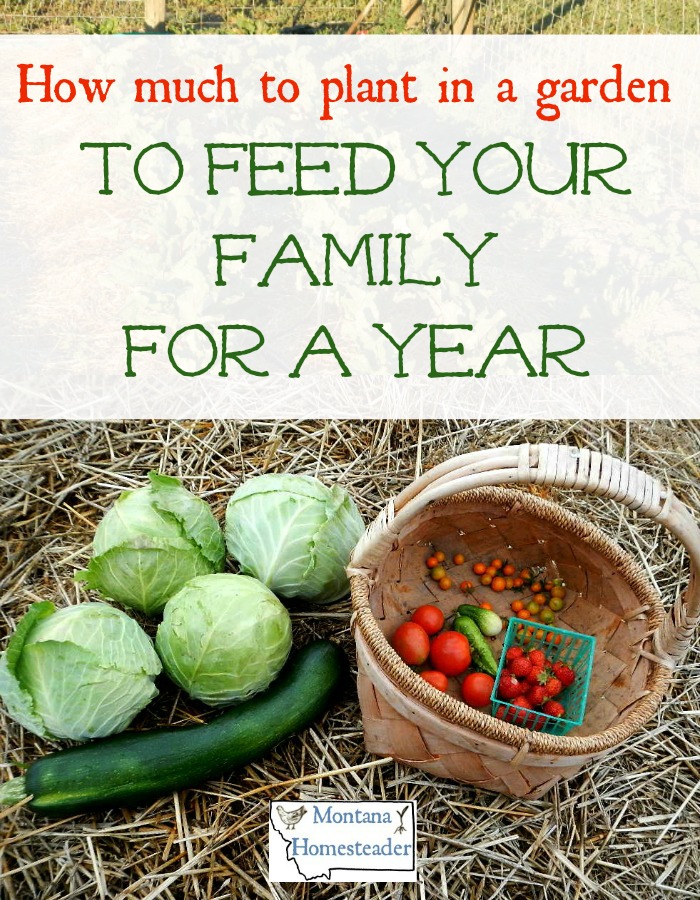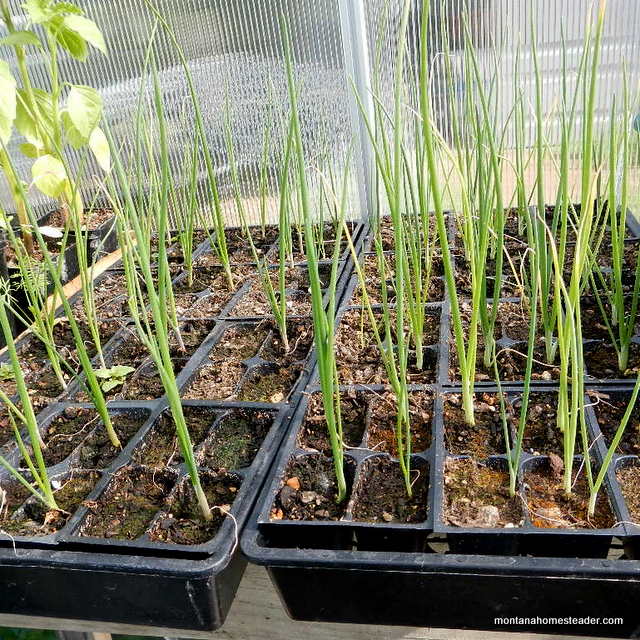How To Garden In Montana
Figuring out exactly what to plant in a garden to feed your family can be a daunting task! There are so many vegetables to choose from, so how do you know what to plant and how much of each plant to grow? In the past, I was limited by how much I could plant due to the small size of our property. While I dreamed of growing enough onions to last us a whole year, we only had space to grow enough for a few months. At our new property, we have ample space to plant a garden and we're going big. With plenty of space to plant vegetables this year, we're actually able to sit down and estimate how much we need of specific vegetables to feed our family for a whole year based on our eating habits and preferences.

This post may contain affiliate links. I receive a small commission when a product is purchased through these links, at no additional charge to you. Thank you for your support!
Deciding What to Plant in a Vegetable Garden
There are a few things to take into consideration when deciding what to plant in a garden. I've learned a lot of this by trial and error over the years. I've also learned a lot from talking with fellow gardeners in the region and reading up on gardening in northern climates.
Climate and Growing season
When I first began gardening on my own a number of years ago, my vegetable choices were a bit random. I planted vegetables I enjoyed eating growing up. While that may sound like a good idea, I wan't knowledgeable of differences in climate and growing seasons across the country. Having grown up in rural humid Pennsylvania, corn and melons grew wonderful. Trying to grow corn and melons here in cold Montana resulted in several years of failure for me. That's when I learned I needed to select vegetables more acclimated to a colder,drier climate and a shorter growing season.
For the last few years I've opted to not grow corn because I had several dissapointing years of failure. This year we're trying it again. The difference this time is that we specifically selected a corn seed variety that grows well in a cooler climate and has a shorter growing season.
What produce do you eat?
Again, back when I first began gardening I never really thought about growing foods that were staples in my diet. Instead of growing onions, I wanted to experiment with trying new vegetables like kohlrabi and swiss chard. While those veggies are tasty and healthy, they're not veggies I eat on a regular basis and took up prime space in my small garden spaces.
Make a list of the fruits and vegetables you eat throughout the year. Make a note of which ones you eat the most and least. This will help you to prioritze which fruits and vegetables to grow. Last year in our small garden, I opted to grow a lot of tomatoes, onions, peas, carrots, spinach and beets. There are a lot of other veggies we eat, but these are ones we consume the most. These are also ones I know I can easily store in cool storage or preserve in various ways by canning and freezing.
Also think about what bulk foods you can purchase in a store for a low cost. Normally I grow green beans every year, but last year I didn't. I discovered that Costco sold a large bag of organic frozen green beans for a low cost. They didn't sell any other organic veggies in bulk like that, just the green beans. I decided it made more sense to last year to plant other veggies in our small garden space since I could buy the green beans for low cost.
What fruits and vegetables can you easily preserve?
This is another important factor to consider when deciding which vegetables to plant in your garden. At our old house we didn't have a root cellar, so growing a large quantity of cool storage crops like potatoes didn't make sense. We instead focused on tomatoes which we could blanch and freeze to use in homemade soups, sauces and chili.
Preserving the harvest is important for a vegetable gardener since this is how you will be able to safely store your food to eat year round. We have a large chest freezer so a lot of my preserving involves blanching and freezing vegetables. I know some folks who don't have a chest freezer and instead dehydrate and can the majority of their harvest.
Deciding How Much To Plant in a Vegetable Garden
Now that you know what vegetables you want to plant in your garden, next you need to figure out howmuch you can plant. I always used to over plant seedlings in my indoor pots and cram them close together in my garden. This was caused by my desire to grow more but being limited by a small space. When plants are planted too close together, they don't grow and produce as well.
How much garden space do you have?
This is the first year of my life that I will have my dream garden. Over the last decade of living in Montana, I always was limited to a small garden space. This year my new garden space is about 7000 square feet. Did I mention this is my dream garden? Our new garden space is 200 square feetbigger than the size of the lot at our old house! This year we have plenty of space to actually grow enough vegetables to feed our family for the year. Plus, we have a portion of our new garden dedicated to perennial fruits like raspberries and strawberries that will provide delicious fruit to preserve and eat year round.
If you're limited by space, there are so many creative ways to grow more food. You can do what I did last year at our old house and dig up more of the yard to expand the garden. I also utilized container gardening with various pots around the deck. When gardening in a small space, think about how you can use your vertical space to grow more. Maybe you can grow pole beans instead of bush beans. Or create a trellis for your vine plants like cucumbers and squash.
How much will you eat in a year?
Since this is the first year of being able to grow a large garden, I actually had to sit and think a bit about just how much we reallyneeded to grow. To figure this out, I thought about our cooking habits. For example, we use a lot of onions when we cook. My guess is we use a couple onions a week in our house. Since there are 52 weeks in a year, I want to grow well over 52 onions.
When I was planting onion seeds in flats in the greenhouse in April, I seeded a tray of 48 pots of red onions. A few of the pots had more than one seed accidentally dropped into them so I know I'll end up with well over 50 onion plants out of that flat. I did the same thing with Walla Walla onions. I figure this will provide over 100 onions for the year which would meet our family's consumption levels of the last year.

Our family loves broccoli, it is one of the few green veggies Little A will eat right now. When I was seeding broccoli flats in the greenhouse, I planted 24 pots. I figured if our family of three ate about half a head of broccoli as a side dish for a meal, those 24 plants would provide us 48 broccoli side dishes a year. That's one side dish of broccoli per week for just under a year. While we don't eat broccoli quite that often, I do love to use it in homemade broccoli soup which requires a bit more broccoli.
Now that we decided what to plant and how much, I'll be curious to see how our garden provides for our family's food needs for the year. I'm keeping records of all the plant varieties we grow and how many plants we have. Once we start harvesting, I'll keep track of how much produce we harvest and preserve for our family. I'm looking forward to growing enough food this year to feed our family for the whole year!
What did you decide to plant in your garden this year?
How To Garden In Montana
Source: https://montanahomesteader.com/deciding-what-to-plant-in-garden/
Posted by: robertsrabing.blogspot.com

0 Response to "How To Garden In Montana"
Post a Comment